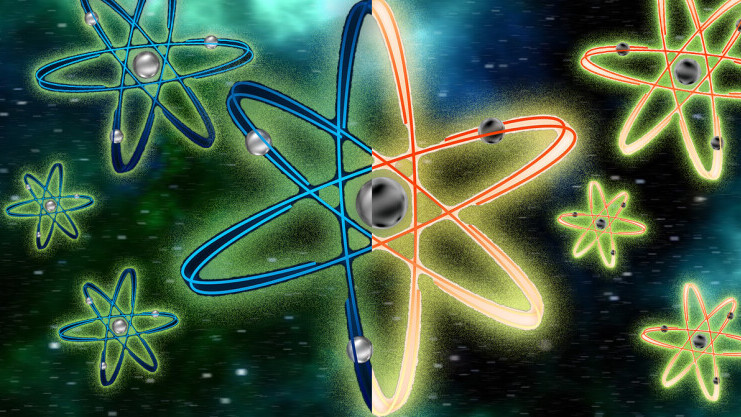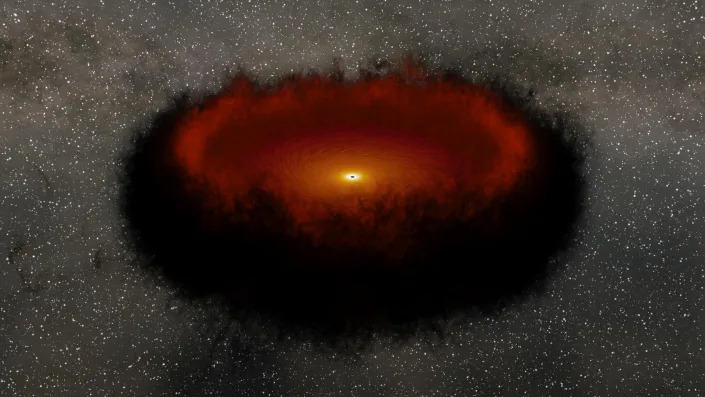SPACE
How to Watch SpaceX Launch Space Force’s Spaceplane for the First Time
George Dvorsky
Fri, December 8, 2023

The X-37B spaceplane.
The X-37B spaceplane.
For the first time, a SpaceX Falcon Heavy will attempt to deliver the Pentagon’s spaceplane to low Earth orbit. The mission marks the seventh for the mysterious spacecraft, aiming to expand the Space Force’s knowledge of the space environment and test new technologies.
The Falcon Heavy is slated to launch at 8:15 p.m ET on Sunday, December 10 from launch complex 39A at Kennedy Space Center in Florida. Both side boosters will attempt vertical landings shortly after launch (Falcon Heavy is essentially three Falcon 9 rockets strapped together). The event will be livestreamed on SpaceX’s account on X, previously known as Twitter.
The mission “will expand the United States Space Force’s knowledge of the space environment by experimenting with future space domain awareness technologies,” Space Force said in a statement. “These tests are integral in ensuring safe, stable, and secure operations in space for all users of the domain.”
For its seventh mission, the X-37B will operate in new orbital alignments and carry a NASA experiment named Seeds-2. This experiment will expose plant seeds to the harsh radiation environment of long-duration spaceflight, gathering data vital for future crewed missions.
The spaceplane’s previous mission, launched atop a ULA Atlas V rocket in May 2020, saw the spaceplane spend a record 908 days in orbit before landing at NASA’s Kennedy Space Center in November 2022. This mission included a service module that expanded the spacecraft’s capabilities, and hosting more experiments than any previous missions. Among these were the Naval Research Laboratory’s Photovoltaic Radio-frequency Antenna Module experiment and two NASA experiments studying the effects of space conditions on various materials.
This upcoming mission marks SpaceX’s 92nd for the year 2023, inching closer to CEO Elon Musk’s ambitious target of 100 launches within the year. With several weeks remaining, the company appears to be on track to potentially reach this significant milestone.
For more spaceflight in your life, follow us on X (formerly Twitter) and bookmark Gizmodo’s dedicated Spaceflight page.
Victor Tangermann
Thu, December 7, 2023

Grand Theft Tomato
A scandal on board the International Space Station has finally been put to bed.
For months now, NASA astronaut Frank Rubio has been accused by his fellow crew members — in jest, they say, mostly at least —of eating a tiny tomato that was laboriously grown on board the space station.
But as it turns out, Rubio was innocent.
"Our good friend Frank Rubio, who headed home [already], has been blamed for quite a while for eating the tomato," NASA astronaut Jasmin Moghbeli said during a live stream celebrating the station's 25th anniversary.
"But we can exonerate him," she added in the footage, spotted by Space.com. "We found the tomato."
Crime and Punishment
Rubio flew to the space station on board a Soyuz spacecraft in September 2022 and made his return just over a year later due to delays caused by the same capsule starting to uncontrollably leak coolant. The unusual incident forced Russia's space program to send a replacement spacecraft, which ended up taking several months.
While he was on board the station, Rubio tended to an experiment dubbed Veg-05, which involved growing tiny Red Robin dwarf tomatoes.
In late March, astronauts were each given a share of the harvest tucked inside Ziploc bags. Rubio says his share, however, floated away before he could eat the fruits of his labor.
"I spent so many hours looking for that thing," Rubio said during a September livestream. "I'm sure the desiccated tomato will show up at some point and vindicate me, years in the future."
In October, two weeks after returning to the ground, Rubio told reporters that he spent "18 to 20 hours of my own time looking for" the errant tomato, as quoted by Space.com.
"The reality of the problem, you know — the humidity up there is like 17 percent," he added. "It's probably desiccated to the point where you couldn't tell what it was, and somebody just threw away the bag."
Given Moghbeli's latest comments, he likely was spot on in his predictions.
More on the ISS: Space Station Turns 25, Just in Time to Die
'Dark force' theory could solve 2 open cosmic mysteries
Robert Lea
Fri, December 8, 2023

An illustration of a bright galaxy surrounded by a blueish halo.
A new theory that suggests dark matter is made up of particles that strongly interact with each other via a so-called "dark force." If true, this may finally explain the extreme densities we see in dark matter haloes surrounding galaxies.
The existence of particles called self-interacting dark matter (SIDM) acts as an alternative to cold dark matter theories which suggest the elusive stuff is made up of massive, slow-moving (and thus cold), weakly interacting particles that don’t collide. The problem with those cold dark matter models is that they struggle to explain two puzzles surrounding what are known as dark matter haloes.
"The first is a high-density dark matter halo in a massive elliptical galaxy. The halo was detected through observations of strong gravitational lensing, and its density is so high that it is extremely unlikely in the prevailing cold dark matter theory," Hai-Bo Yu, team leader and a professor of physics and astronomy at the University of California, Riverside, said in a statement.
"The second," he continued, "is that dark matter halos of ultra-diffuse galaxies have extremely low densities, and they are difficult to explain by the cold dark matter theory."
Related: Dark matter may be hiding in the Large Hadron Collider’s particle jets
The haloes
Dark matter presents a major conundrum for scientists because, despite making up around 85% of the matter in the cosmos, it does not interact with light and therefore remains virtually invisible to us. This tells researchers that dark matter can't just be unseen conglomerations of matter made up of electrons, protons and neutrons — so-called baryonic matter that comprises stars, planets, our bodies and pretty much everything we see around us on a day-to-day basis. No, dark matter has to be made of something else.
The only way that researchers can infer the existence of dark matter at all, in fact, is because it has mass and thus interacts with gravity. This effect can be "felt" by baryonic matter we can indeed see and by light, which astronomers are definitely able to observe.
More specifically, when light travels past these dark matter-wrapped galaxies from background sources, the substance's influence on the fabric of space diverts the light's path and, in turn, makes the background sources appear "shifted" to new locations in space.
This effect, dubbed gravitational lensing, is what originally allowed scientists to determine that most, if not all, galaxies are surrounded by haloes of dark matter in the first place. And these haloes are believed to extend far beyond the limits of those galaxies' visible matter objects like stars, gas and dust. Gravitational lensing has also allowed astronomers to measure the density of dark matter haloes. Denser haloes are responsible for stronger lensing than less dense haloes around ultra-diffuse galaxies — low-brightness galaxies with scattered gas and stars. However, researchers have struggled to explain the extremes of dark matter halo densities.
Enter, artificial intelligence
To tackle this puzzle, Yu and colleagues, including the University of Southern California postdoctoral researchers Ethan Nadler and Daneng Yang, constructed high-resolution simulations of cosmic structures that are based on actual astronomical observations.
They factored into these simulations strong dark matter self-interactions on mass scales relating to strong lensing haloes and ultra-diffuse galaxies.
"These self-interactions lead to heat transfer in the halo, which diversifies the halo density in the central regions of galaxies," Nadler explained. "In other words, some halos have higher central densities, and others have lower central densities, compared to their cold dark matter counterparts, with details depending on the cosmic evolution history and environment of individual halos."
The team concluded that SIDM interacting through a "dark force," just as baryonic particles interact through the force of electromagnetism and via the strong and weak nuclear forces, could offer a solution that cold dark matter theories don’t deliver.
"Cold dark matter is challenged to explain these puzzles. SIDM is arguably the compelling candidate to reconcile the two opposite extremes," Yang added. "Now there is an intriguing possibility that dark matter may be more complex and vibrant than we expected."
Related Stories:
— We still don't know what dark matter is, but here's what it's not
— Astronomers weigh ancient galaxies' dark matter haloes for 1st time
— Could a 'supervoid' solve an unrelenting debate over the universe's expansion rate?
The team thinks their research also provides an example of the analytical power of uniting real observations of the universe, which grow in detail with each new generation of telescope, with the burgeoning power of artificial intelligence.
"We hope our work encourages more studies in this promising research area," Yu said. "It will be a particularly timely development given the expected influx of data in the near future from astronomical observatories, including the James Webb Space Telescope and upcoming Rubin Observatory."
The team’s research was published in November in The Astrophysical Journal Letters.









